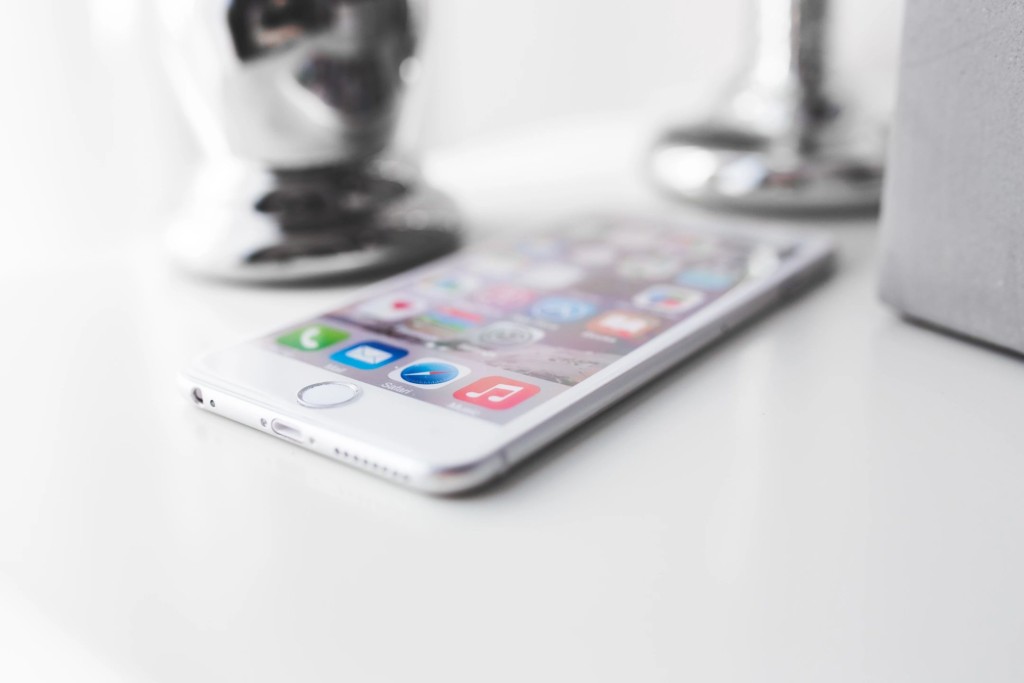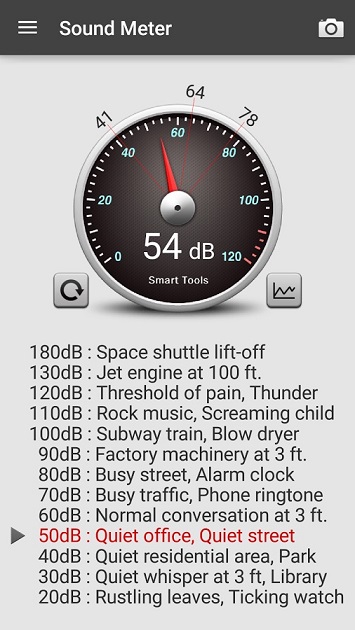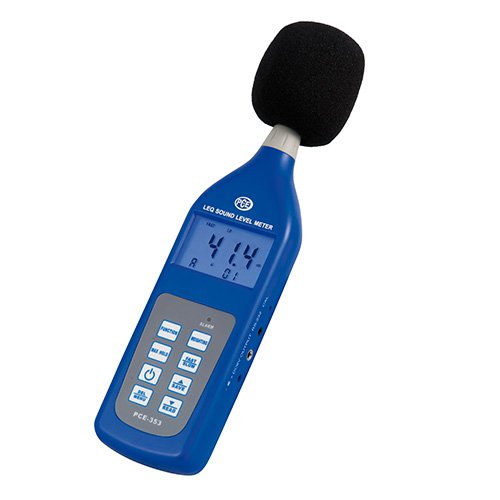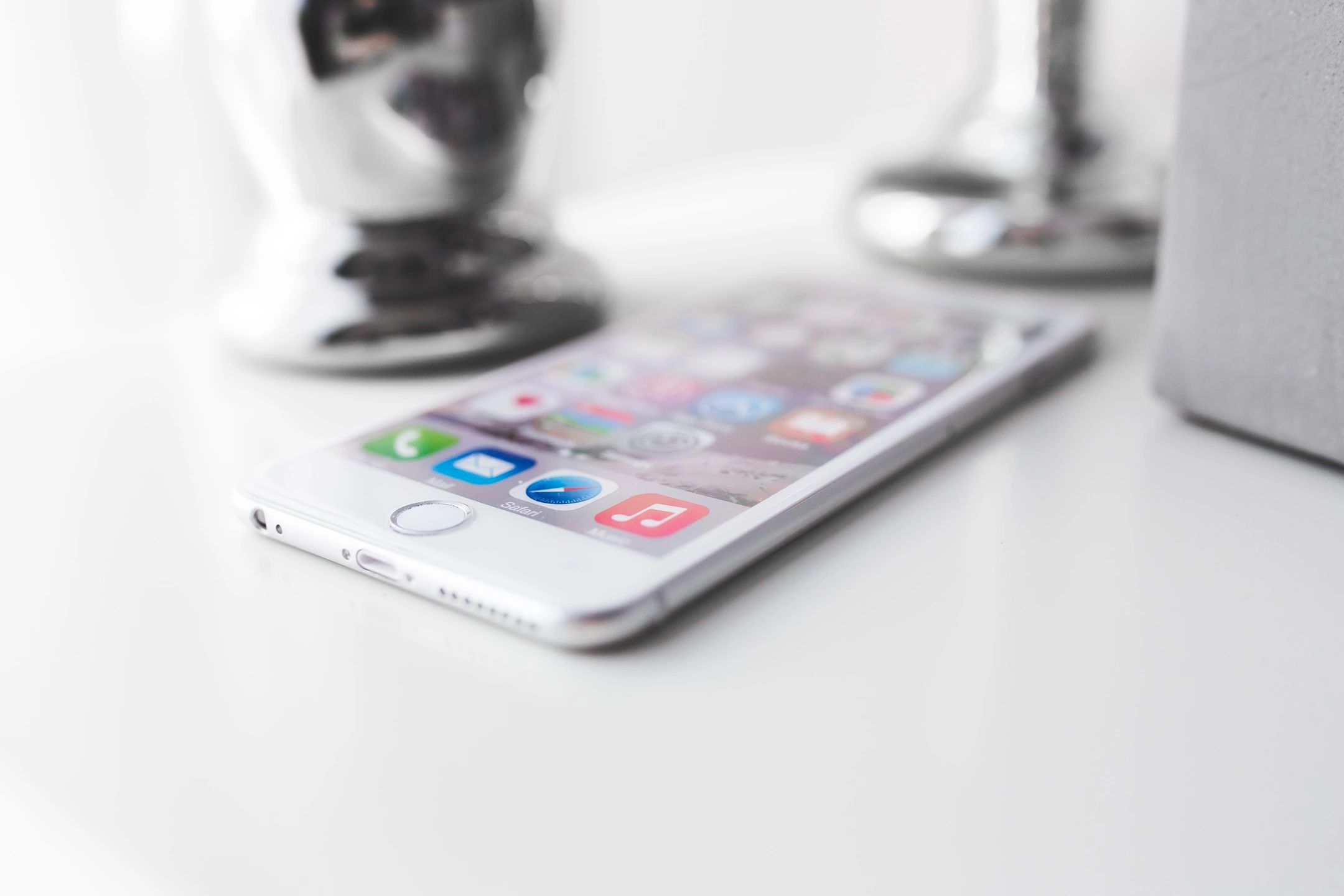Sound Level Measuring using smartphones? Think twice

Ever imagined Sound Level Measuring using smartphones? Mobiles have evolved into computing machines with extraordinary capabilities. They have cameras, microphones, gyroscopes, proximity sensors, accelerometers, light sensors and GPS receivers. The advancement of these handheld devices has evolved into them being used as various instruments like torches, cameras and also sound measurement devices.
Application developers have created sound measurement applications utilizing the built-in microphones of the device.
Sound Level Measurement using mobile apps
Measuring sound pressure level (SPL) is vital, SPL is a logarithmic measure of the effective sound pressure of a sound relative to a reference value. In our daily activities we encounter a variety of sounds and noises like a buzz, hum and ring. But, every individual risks himself to harmful level of noises that can damage the sensitive structure of the ear.
This phenomena of injury to the inner ear is called Noise-induced hearing loss (NIHL) which can be temporary or permanent. Let’s dive deep into details to get a better understanding of NIHL, inside our ear are small hair cells that transmit electrical signals to the brain. These sensitive hair cells can be easily damaged by exposure to extremely loud noises in the workplace, or/and at home.
Common activities like lawn mowing, working with machine tools, attending rock concerts etc. can demolish these hair cells, resulting in NIHL and even ringing in ears (tinnitus).
The solution to this is by measuring sound in your home and workplace. With the advent of smartphones and mobile applications, sound measurement is not that difficult anymore.
Noise Level Monitoring App
Decibel levels can be measured using some of the smartphone (android or iOS) applications that raise a red flag when the surrounding noise is high and harmful to the ears. Following are a list of some mobile apps that help in monitoring noise in mobile.
- dB volume meter – Free Decibel meter app for iPhone
An free app developed for iPhone users, dB volume meter (DBVM) offers an easy way to compute the noise levels surrounding you. The DBVM displays the approximate decibel level where you and your smart phone are situated. The app was created by Darren Gates and is a tool for detecting noises in causal settings such as music festivals, airports and so on. But, this app is not for people operating heavy machinery, or exposing themselves to over 90 dB of sound, they should rely on a professional SPL meter.
- TooLoud?
Also created for iPhone users, TooLoud measures the sound in your surroundings and warns you if you should wear earplugs. We frequently take loud noises for granted and rubbish those warnings as a part of living and working conditions. TooLoud? Displays decibels in a simplistic numeric display and allows you to specify filters and offset values for normal background noises. It is good option for noise monitoring app
- deciBel – Free noise level app

This app is created for android users and is a simple tool that utilizes the microphone of your device to calculate the SPL. The app displays the maximum, minimum and current values of sounds surrounding you and converts the decibels into understandable graphs and level charts. The app was developed by Peter Tschudin and is available for free on the Google Playstore.
Below are few Notable apps available on Play Store:
- Sound Meter: A straightforward app that provides real-time sound level readings and offers both analog and digital displays.
- Decibel X: Known for its accuracy and user-friendly interface, Decibel X offers a variety of features including sound level history, peak sound levels, and even the ability to save and export data.
- SPL Meter: This app provides a simple way to measure sound levels and includes features like customizable measurement ranges and calibration options.
- Niosh Sound Level Meter: Developed by NIOSH (National Institute for Occupational Safety and Health), this app is geared towards workplace safety and adheres to specific noise exposure standards.
- Smart Tools: This app offers a suite of measurement tools, including a sound level meter, making it a versatile choice for various measurement needs.
It’s important to note that the accuracy of sound level meter apps can vary, and for professional or critical applications, it might be better to use dedicated hardware sound level meters. Additionally, app availability and features may have changed since my last update. I recommend checking recent reviews and ratings on the Google Play Store to find the best sound level meter app that suits your requirements.
Compared to International standards
All of these smartphone apps are great but how do they perform compared to the International standards of sound measuring instruments that are solely created to calculate a varying number of decibels accurately. One major drawback on the sound measuring apps of the smartphone is the microphone.
The primary purpose of the mike in a smartphone is to record human voices. As most of us know that speech information can be conveyed within a bandwidth much smaller than the human auditory range, smartphone devices are only required to be responsive to this smaller bandwidth, whereas a measurement microphone is required to have a flat, wider frequency spectrum response.
Learn More about Noise Impact Assessment
Occupational Safety and Health Administration (OSHA)
OSHA is a regulatory authority based out of the USA. They suggest having either of these sound measuring instruments – noise dosimeters, octave band analyzers and sound level meters. Sound level meters are of 3 types –
- Type 0 is used in laboratories
- Type 1 is used for precision measurements in the field
- Type 2 is used for general purpose measurements

Most sounds are more than just a pure tone, they are a mix of several frequencies and to measure these, Octave band analyzers are used. They segment noise into component parts, the filters used in this instrument helps calculate accurate levels of noise.
The Noise dosimeter is worn by the worker and can also measure sound levels. This instrument determines the personal noise during a work shift period.
As you can see OSHA doesn’t mention anywhere in their document the use of smartphone devices as a potential tool to monitor noise levels in industries.
Though smartphone apps are good for a general measurement of decibels, a measurement microphone is the apt instrument to calculate work place noises among others. It gives exact and precise readings of decibels compared to the approximate measurement numbers provided by smartphones.
So if you are thinking about Sound Level Measuring using smartphones for assessment, then you will have to seriously consider above points before making the right decision.
Do let us know your thoughts in comment section, we would like to hear about it.
We are environmental consultant in mumbai offer environmental monitoring & consultancy services. Feel free to leave a comment in case of any questions.

Anil Shelke is the Executive Director at Perfect Pollucon Services with 30+ years of expertise in pollution control, environmental audits, hazardous waste management, and ISO 14001 implementation. He specializes in helping industries align with CPCB/SPCB regulations.
Yes, you can measure sound levels using your smartphone by using a sound level meter app. These apps utilize your phone’s built-in microphone to capture sound and then provide you with a reading of the sound level in decibels (dB). Keep in mind that while smartphone apps can provide useful estimates of sound levels, they might not be as accurate as professional-grade sound level meters for critical measurements. However, they can be handy for general monitoring of noise levels or quick assessments of your environment.
To measure sound levels using your mobile device, first, download and install a sound level meter app from your app store. Launch the app, grant microphone permissions, and ensure your device’s microphone is unobstructed. Hold your phone with the microphone facing the sound source, and the app will display the sound level in decibels (dB), providing a general estimate of the noise level in your environment.
Sound level measurements using smartphone apps can be useful for general assessments of noise levels in various environments. However, their accuracy can be influenced by factors such as the quality of the phone’s microphone, calibration issues, and the app’s algorithms. For critical or professional applications, dedicated sound level meters are generally more accurate and reliable due to their specialized design and calibration capabilities.
Phone sound level meters can provide reasonably accurate estimates of sound levels for casual use and general monitoring. However, their accuracy can vary due to factors such as the quality of the phone’s microphone, the app’s calibration methods, and the phone’s hardware limitations. For precise or professional measurements, dedicated and calibrated sound level meters are recommended.
Yes, you can measure dB (decibels) using various sound level meter apps available for Android devices. These apps utilize your phone’s microphone to capture sound and provide an estimate of the sound level in decibels. Keep in mind that while they are useful for general measurements, they might not be as accurate as professional-grade sound level meters for critical applications.
A sound level of 70 decibels (dB) is considered moderate in terms of loudness. To give you a sense of comparison:
Normal conversation typically ranges from 60 to 70 dB.
Background noise in a restaurant or office might be around 70 dB.
A vacuum cleaner at a close distance can produce around 70-75 dB.
Traffic noise from a busy street can range from 70 to 85 dB.
Remember that the perception of loudness can also be influenced by the frequency or type of sound.
It’s important to note that the loudness of a sound is measured in decibels (dB) and is a relative measure that depends on the context and the source of the sound. The concept of “loudness” on a phone might refer to the maximum volume output of the device’s speaker, which is usually expressed in decibels relative to a reference level.
However, if you’re referring to measuring the ambient noise around you using a sound level meter app on your phone, 50 dB is generally considered to be a quiet environment. It’s similar to the noise level in a library or a quiet office. Keep in mind that smartphone microphones and apps might have variations in accuracy, so this should be considered as an estimate.

